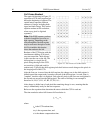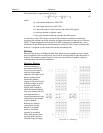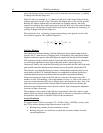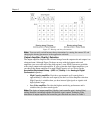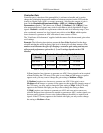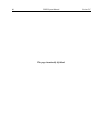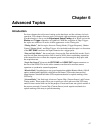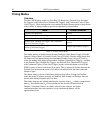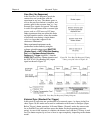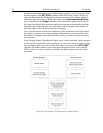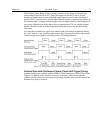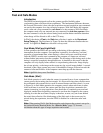
67
Chapter 6
Advanced Topics
Introduction
Previous chapters have discussed setting up the hardware and the software for basic
operation. This chapter discusses topics associated with experiment synchronization.
Synchronization is set up on the Experiment Setup|Timing tab in WinX and on the
Shutter and Trigger expanders in LightField. With the exception of Edge Trigger,
the topics are addressed in order of their appearance on the Timing tab.
“Timing Modes”, the first topic, discusses Timing Modes {Trigger Response}, Shutter
Control {Shutter Mode}, and Edge Trigger. Also included under this topic is a discussion
of the EXT SYNC connector, the input connector for a trigger pulse.
“Fast and Safe Modes”, the second topic, discusses the Fast and the Safe modes. Fast is
used for real-time data acquisition. Safe is used in WinX when coordinating acquisition
with external devices or when the computer speed is not fast enough to keep pace with
the acquisition rate.
“Logic Out Control” discusses the EXT SYNC and LOGIC OUT output connectors on
the rear of the PIXIS. The levels at this connector can be used to monitor camera
operation or synchronize external equipment.
“Kinetics Mode” describes how to set up and acquire data with the Kinetics Mode (a WinX
option, standard with LightField), which allows full-frame CCDs to take time-resolved
images/spectra. Note that full-frame CCDs require mechanical or optical masking of the
CCD array.
“Custom Modes”, the final topic, discusses Custom Chip {Custom Sensor} and Custom
Timing modes. These modes allow you to specify an active sub-area of the CCD array
and/or a faster vertical shift rate for the purpose of increased frame rate (pixels outside of
the area are not read). Custom Chip {Custom Sensor} mode requires mechanical or
optical masking of the array to prevent smearing.




